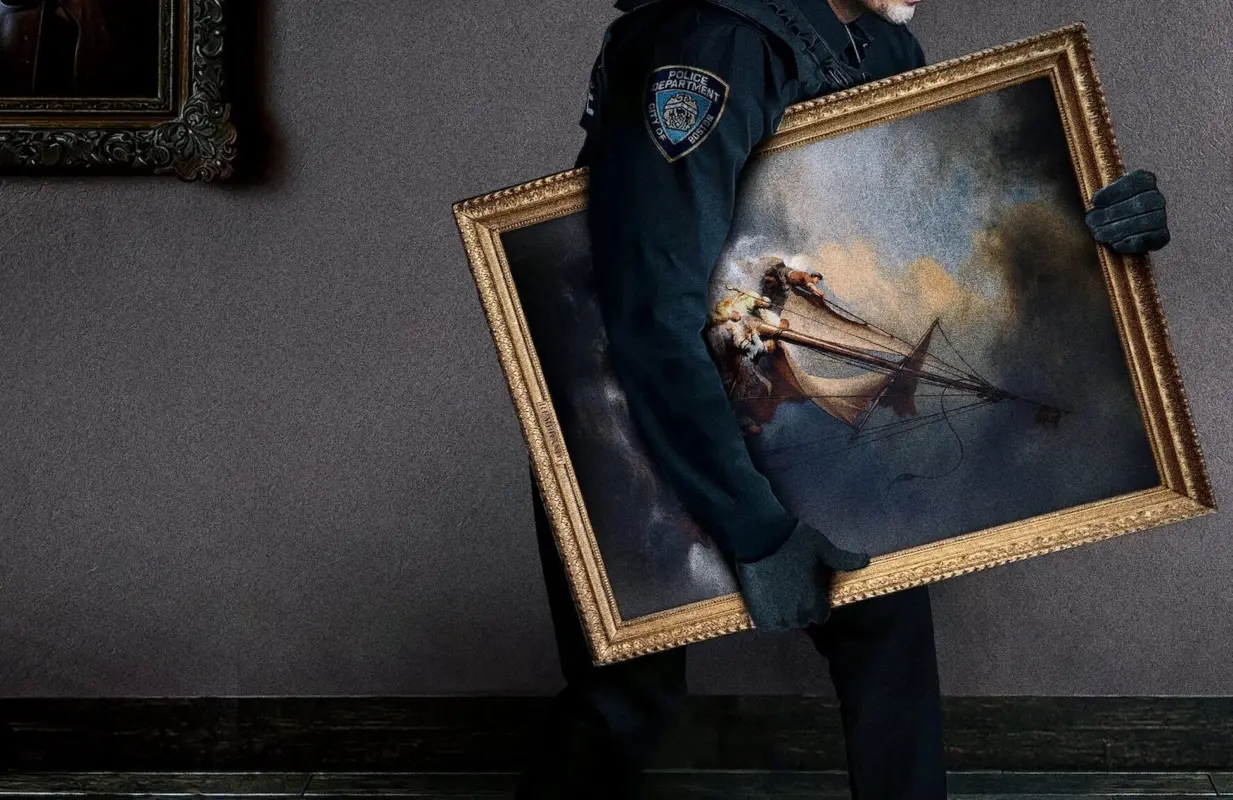This Is a Robbery Is a True Crime Caper Worth Watching
-
 Rembrandt’s "The Storm on the Sea of Galilee" was one of 13 works of art stolen from the Isabella Stewart Gardner Museum in 1990. (This Is a Robbery/Netflix)
Rembrandt’s "The Storm on the Sea of Galilee" was one of 13 works of art stolen from the Isabella Stewart Gardner Museum in 1990. (This Is a Robbery/Netflix)The editor-in-chief of the daily newsletter Best Evidence, Sarah D. Bunting knows a thing or two about true crime. Her weekly column here on Primetimer is dedicated to all things true crime TV.
So much true crime content is dedicated to the same handful of cases — Bundy, Jack the Ripper — and other cases that resemble them that it's tempting to recommend any series about a less horrifying type of true crime, just for giving a viewer's soul and stomach a break. But Netflix's latest limited series, This Is A Robbery: The World's Biggest Art Heist, isn't just a welcome respite from sociopathic predators. It's well-produced and legitimately entertaining.
The art heist at the center of This Is A Robbery is the March 1990 burglary at Boston's Isabella Stewart Gardner Museum. Committed in the wee hours of the day after St. Patrick's Day — not an insignificant factor in a Boston case — the Gardner heist saw thirteen works stolen from the institution. None of them has ever resurfaced, and despite as many theories as there are dudes named Sully in the greater Boston area, the case remains unsolved... always a tantalizing prospect for a true crime producer. But the Gardner heist isn't what I would call a forgotten topic; Back in 2018, WBUR's Kelly Horan put out a highly regarded and compelling podcast on the investigation and its ripple effects, and there are almost as many books about the robbery as there are crackpot theories on who pulled the job. I did wonder before watching This Is A Robbery whether it would end up duplicating work I'd already heard or read, only adding visual aids.
I needn't have worried. Beyond simply adding visual aids (which are helpful, given that this is a story about works of art), director Colin Barnicle manages to make Robbery is a worthwhile watch overall because he understands the difference between giving viewers greater context and burying us in detail. It's a difficult line to tow, but Barnicle's four-episode overview of the robbery, the investigation, and Boton's criminal underworld give a great sense of the time and the stakes without going overboard. Barnicle's c.v. prior to Robbery consists of a lot of short-subject docs on sports, and a lot of Boston-based topics; he's clearly lived with the case for a long time and appears to have put a lot of thought into how best to bring it to life for viewers. The rest of the production team is on his wavelength: director of photography Stephen McCarthy made me want to visit the Gardner (or, really, any museum; it's been a while!), and Jason Hill's score gives the re-enactments oomph.
Robbery is particularly effective at giving viewers the timeline of the heist and the layout of the museum. Various episodes move around in time to illustrate various theories, but they don't get bogged down in dead-end hypotheses. (Boston true crime often falls into the trap of unpacking even the most tangential connection to Whitey Bulger; Robbery wisely avoids this.) The series boasts excellent access — many of the FBI agents, defense attorneys, museum guards, and other case figures participate, and several of the names on the Kelly Horan reading list I've mentioned above also appear on camera. Robbery has a light touch with their respective areas of expertise, so viewers understand what's at stake for the art world with Rembrandt's only seascape still missing, and how black markets use stolen art and ephemera to finance or leverage deals for everything from drugs to guns to sentence reductions.
Barnicle also has a good ear for a good yarn, and textures his storytelling with "local color" without trading in Bahston stereotypes that wore out around the time Good Will Hunting won its Oscar. A segment from the vintage educational video Museum Security: The Guard's Role, followed by an instructive interview with its creator, is one highlight. Another comes when the action moves to Hartford, CT, where we meet Bobby Gentile. Gentile, who ended up getting made by a Philadelphia Mafia family, converted part of his (probably money-laundering) garage into a kitchenette, where he served noodles and Chianti to "broken-down old gangsters" from the neighborhood. It's not necessary to Barnicle's story, I suppose, and neither are a handful of the interviews with Myles Connor (briskly captioned "art thief," Connor should probably have a documentary to himself), but it's interesting stuff, and Barnicle doesn't let these interludes sap the show's momentum. Even Robbery's montages, a well-worn cliche of the genre, work. One near the end, highlighting how many people haves tried to crack the case, is particularly successful because it's not the emotional shortcut such montages often try to take. Viewers have now spent enough time with the case and its figures themselves that the evidence of time passing is quite striking.
If you consider museums a snore or don't think of yourself as a fine-arts person, you may think Robbery isn't for you, but I recommend you give it a try. The series is well paced, doesn't take itself too seriously, and is a ride well worth taking.
All four episodes of This Is a Robbery: The World's Biggest Art Heist drop on Netflix April 7th.
Sarah D. Bunting co-founded Television Without Pity, and her work has appeared in Glamour and New York, and on MSNBC, NPR's Monkey See blog, MLB.com, and Yahoo!. Find her at her true-crime newsletter, Best Evidence, and on TV podcasts Extra Hot Great and Again With This.
TOPICS: This Is a Robbery: The World's Biggest Art Heist, Netflix, True Crime